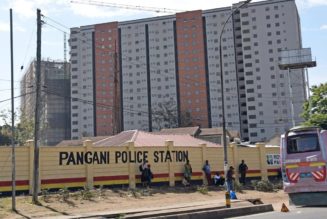Homes
Shauri Moyo muddle after Ruto’s 25-floor directive
Tuesday March 07 2023
President William Ruto officiating the groundbreaking ceremony for the proposed Shauri Moyo ‘A’ affordable housing project on January 27, 2023. PHOTO | EVANS HABIL | NMG
President William Ruto’s directive changing the design of one of the most ambitious multibillion-shilling affordable housing projects in Shauri Moyo, Nairobi has dug its implementation into a hole.
Sources indicate that construction experts are hard-pressed to find a way to actualise the project while still maintaining the original goal of providing affordable decent housing without putting excessive pressure on infrastructure and the environment and factoring in the local economy for affordability.
During the groundbreaking event a few weeks ago, Dr Ruto ordered that the skyscraper be raised to 25 floors from the initial design of 16 floors to address the land scarcity challenge.
Read: How affordable housing can drive Kenya’s growth
“My people at the ministry had initially planned to construct 16-storey apartments but I have told them that land is scarce in Nairobi,” said President Ruto.
While experts at the Ministry of Housing are holed up in their offices trying to crack implementation, building experts say the task they face is daunting and might mean several modifications to the initial plan, a breach of some zoning regulations and additional time to complete.
“The directive to have 25 floors as opposed to 16 is obviously good in terms of the numbers that the project will absorb as tenants once done,” said Michael Otechi, a building consultant and analyst.
“Implementation here is the issue given Shauri Moyo’s location in relation to aeroplane pathways, what the current by-laws say for such high-rise buildings and risk they pose.”
Currently, the city zoning by-laws allow for the construction of high-rise apartments to a maximum of six, eight, ten and sixteen floors depending on location.
Still the project will have to make provisions for transportation, water and sewerage, education, health, community facilities, and environmental pollution while still being affordable to the local community and sticking to the original budget of the project.
Experts say that the development will have to seek and receive special zoning regulation permissions to be carried out in the wake of the challenges that it portends in its actualisation.
Building experts also say that new budgets will have to be put in place for re-design to cater for lighting, safety concerns, infrastructure support, waste disposal, electricity use and so on, a development which might mean that the final price is beyond affordability to the local communities it is primarily targeted at.
“The Master plan will have to be redeveloped or modified. That will mean additional costs,” said Nahashon Kibiwott, founder of D14, an architectural firm.
“Whoever the designers of the project are, will have to re-look at how many units per block. There is a danger that the lower units will not be able to receive any sunlight at all depending on the positioning and angling of the blocks and space between each other. Such units will have to be on electricity full-time. That is a cost to the end buyer.”
The Shauri Moyo project is one of the five affordable housing projects and is expected to inject 3,000 housing units at a cost of Sh4 million and below with tenants paying no more than Sh7,000 per month as rent under the tenant purchase scheme and owning the houses at the end of 15 to 20 five years.
According to the plans, 50 percent of the one two and three-bedroom units are to be reserved for the local community.
Fawcett Komollo, an urban planner and a lecturer at the Technical University of Kenya reckons that while high-rise buildings are the way to go to address the issue of land scarcity in the city and an ever-increasing population, piecemeal review of the zoning laws to cater for each project is the wrong approach.
“There is an urgent need to have the zoning regulations in Nairobi reviewed so as to have a more planned and organised city,” said Komollo.
Read: Affordable housing: A real shot at home ownership or hot air?
“Reason being, if for every project we are going to have specific exemptions on the by-laws on zoning to accommodate the specific interests, we are going to end up with a number of projects that are not synchronised with their surroundings in terms of what the purpose of the area was designed for.”









